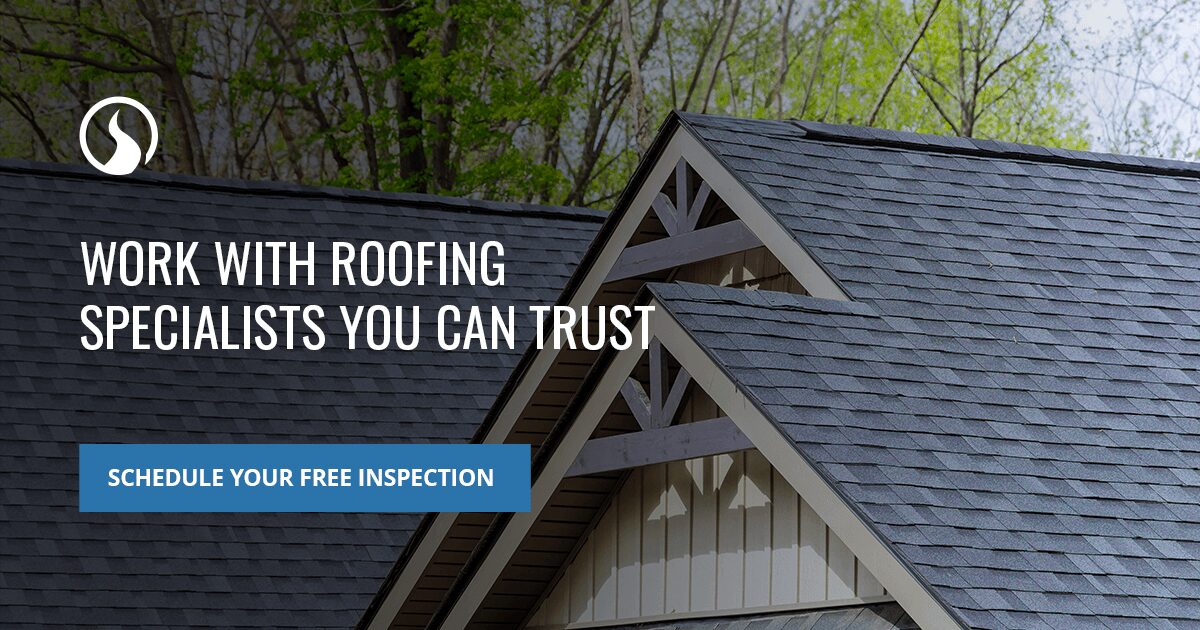10 Steps for Conducting a Roof Hail Damage Inspection in Cincinnati, Ohio
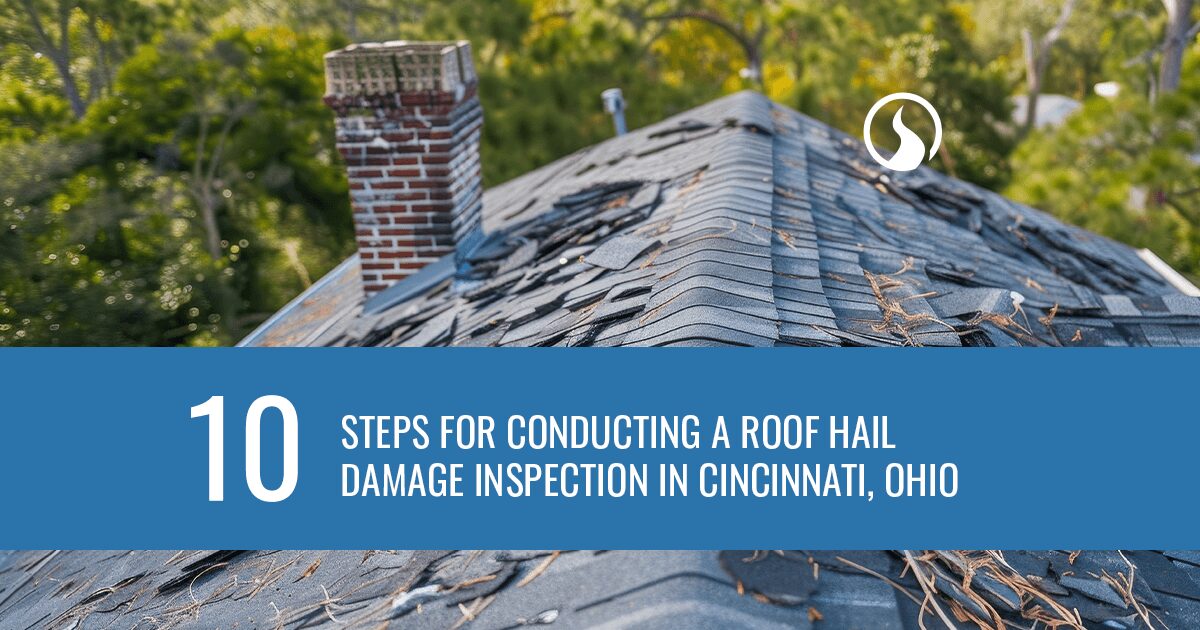
Every home faces natural elements and unexpected storms. While well-built roofs are durable and reliable, all materials are susceptible to some form of damage. It can be easy to forget about roof damage until you face a problem, but assessing damage and making repairs or replacements quickly can save you time and money while ensuring the utmost protection for you and your loved ones.
Unfortunately, homeowners in Cincinnati, Ohio, can face hail damage. Hail storms can cause significant home and property damage, including to your roof. Untrained eyes may have a tough time recognizing minor signs of hail damage, but even small damage can grow into large problems over time. Thankfully, the professionals at Coldstream Exteriors are here to help you navigate the inspection process and identify when you need hail damage roof repairs or replacements.
Importance of Conducting an Inspection for Hail Damage on Cincinnati Roofs
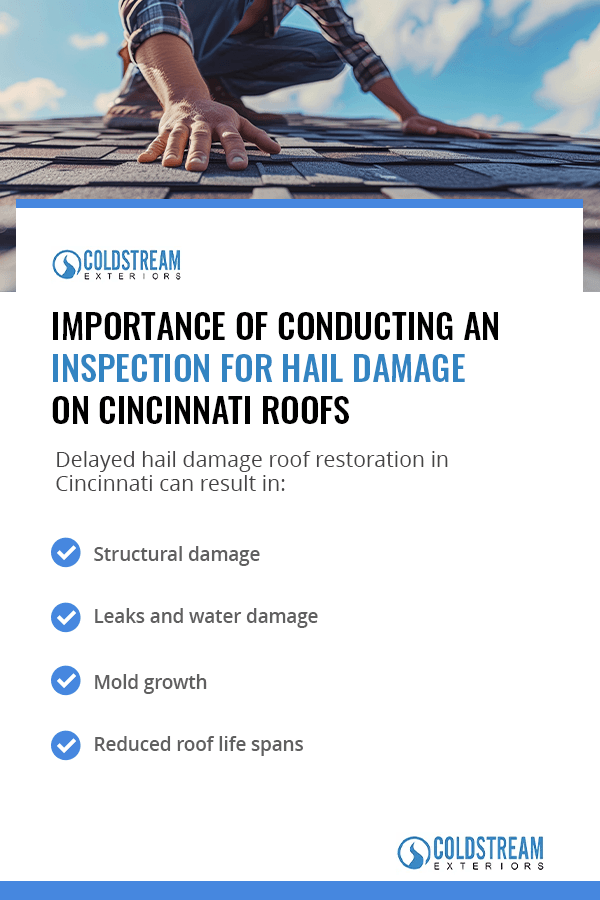
It’s always a good idea to inspect your home’s exterior after adverse weather events. Looking for damage and ensuring your home’s integrity is essential for your safety and material longevity. When it comes to hail, it’s vital to assess possible damage quickly. Hail damage can be unsightly and cause a range of extensive problems if you don’t address the issue promptly. Delayed hail damage roof restoration in Cincinnati can result in:
- Structural damage: High-speed impact can cause cracks, punctures and dents in roofing materials. This damage can result in broken or misplaced shingles, granule losses, and gaps for water and other natural elements to seep into the roof. Each of these problems can have long-term effects on your roof’s integrity and lead to more substantial and costly issues later.
- Leaks and water damage: Roof leaks are dreaded pain points for any homeowner. If you’ve ever looked up and noticed water stains or dripping water, you’ve experienced the hassle of leaks. Along with creating unsightly spots in your home, water damage can cause issues like musty odors, interior wall bulging, paint and shingle warping, rusting, and more. Hail can contribute to leaks by creating new entries for water. You can often detect a roof leak by spotting missing shingles or nails, cracks, or excess debris that causes water to pool on your roof.
- Mold growth: If hail creates an opening on your roof, this unprotected spot can collect water and face high humidity levels that result in mold growth. This environment is ideal for these microorganisms, allowing them to spread throughout your roof and into your home quickly. Mold can be dangerous for your health and threaten the structural integrity of your home by damaging building materials.
- Reduced roof life spans: Hail can cause cracks in wooden shingles or crush, dent and displace granules in asphalt shingles. Additionally, hail can expose underlying roofing materials, making them susceptible to natural elements. The lack of protection of these elements can lead to premature aging, effectively reducing your roof’s life span.
Steps for Inspecting Your Roof
You must take immediate action after a hail storm. A thorough evaluation of interior and exterior elements will empower you to identify potential issues quickly, ensuring you can save time and money with quick repairs. Follow these steps for a comprehensive inspection.
1. Safety First: Precautions to Take Before Inspection
First and foremost, your safety is of the utmost importance. Any time you engage in a home project like a roof inspection without professional assistance, it’s critical to ensure proper safety measures. Wear roofing boots or other soft-soled shoes any time you’re on the roof. Ensure you have a sturdy ladder in excellent condition, and consider finding a helper to hold the ladder while you climb. Bring a utensil, such as chalk, to mark damaged areas so you can easily identify them, and avoid stepping near these areas as you walk around the roof. Always alert someone of your plans before climbing to the roof to ensure you can receive immediate aid in case of any emergency.
2. Exterior Inspection: Assessing the Roof From the Ground
You can sometimes detect hail damage before ever stepping foot on your roof. Obvious signs like fallen shingles or large cracks can be visible from the ground. You might also be able to spot dents or divots, depending on the size and location of the damage. You can also evaluate your windowsills or casings and house siding to gather an idea of the extent of damage. Often, if the roof experiences significant damage, these areas will accumulate some form of damage as well. Assess any exposed metal surfaces around your home, and evaluate other features and objects, such as decks and air conditioners. If you notice extensive damage on these surfaces, there’s a good chance you can skip stepping on the roof and start requesting professional repairs.
3. Interior Inspection: Checking for Signs of Damage Inside
If you have a compromised roof and don’t address the issues quickly, you’ll often face exterior and interior damage. If your home has faced several hail storms or other significant weather events but hasn’t undergone inspections or repairs, you can look for signs of damage around your home’s interior. Leaks, water stains, attic seepage, and mold or mildew growth are indicators of a compromised roof. Water stains will often appear on the ceilings or walls and around light fixtures. Wet insulation or excess water in your attic can indicate seepage, and mold on your ceiling or walls often signals roof issues.
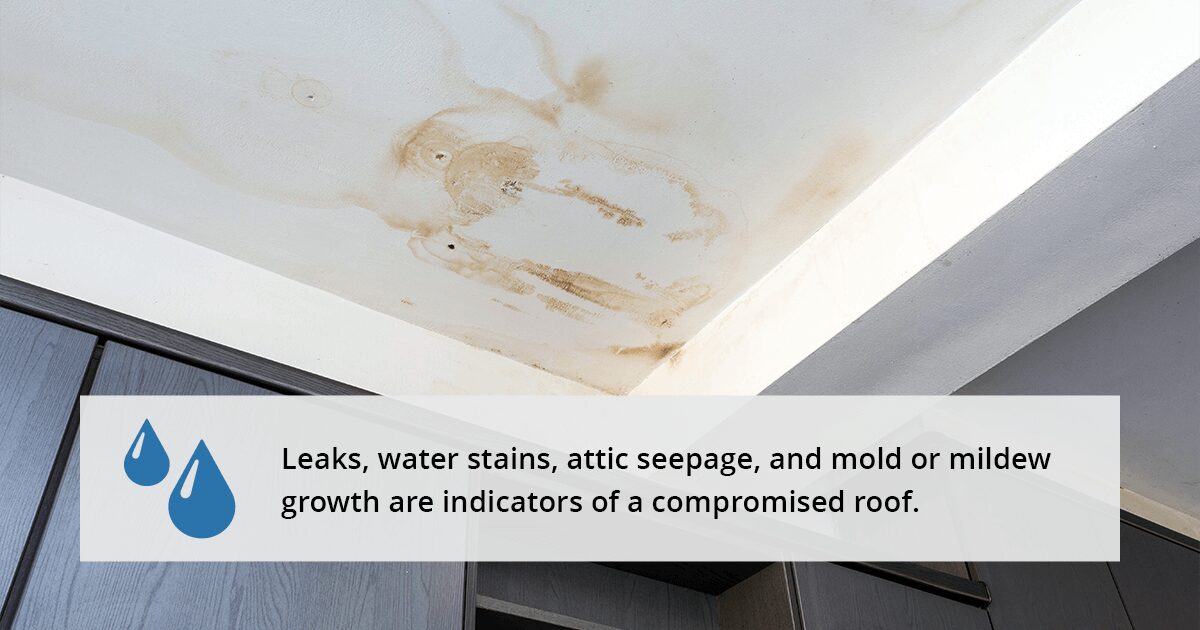
Other interior signs include enhanced sunlight, peeling wallpaper or paint, odd smells, and high energy bills. If your ceiling or attic allows sunlight to filter through, you definitely have a roof issue. Peeling paint or wallpaper could result from water seeping into the walls, and odd smells can also accumulate as your house retains excess moisture. Even if you can’t detect any issues with your eye, assessing your energy bills can help determine if you have insulation issues. While these issues can also result from other incidents, it’s important to contact a professional to determine the cause of the issues and how to address them.
4. Assessing Your Property: Identifying Hail Damage on Roofing Materials
When it’s time to determine specific material damage, you must consider several elements. Hail can impact roofing materials differently, so you must understand which materials you have and how to spot hail-specific damage. Common Cincinnati roofing materials that can experience hail damage include:
- Asphalt shingles: These shingles have mineral granules that hail can loosen or displace. If you spot large gaps on your shingles or dark spots that seem discolored from the rest of the shingle, you have some damage. Dark spots can be the result of many granules falling from one location, exposing a dark bottom layer.
- Metal roofing: Metal roofs offer weather resistance and durability. When it comes to hail, signs of damage can show in the form of impact dents.
- Concrete or clay tiles: Clay and concrete tiles are charming choices for many homeowners. These tiles are moisture-resistant, providing excellent weather resistance. However, hail can gouge these materials, leaving cracks and chips of varying sizes.
- Slate roofing: Very large hail can damage a slate roof, and thin or fragile slates will be more susceptible to damage. Typically, hail damage on a slate roof consists of punctures in the slates, dents in the metal flashings or impact markings.
5. Evaluating Gutters: Inspecting Flashing and Gutter Damage
Gutters and flashings are other critical components of your roofing system. The type of gutters you have can impact your likelihood of experiencing hail damage. For example, aluminum gutters are more prone to cracking, while zinc systems are great at combatting heavy rains. Additionally, seamless gutters have fewer weak spots than section systems.
Dents, cracks and similar signs can indicate hail damage. You’ll need a professional to address these gutter issues because avoiding them can result in pooling water and leaks that can impact your home’s integrity.
Your roof flashing directs water away from your chimneys or vents. These areas are prone to leaks, so keeping excess water from entering is essential. When the flashing faces hail damage, you can often spot bends or dents. While these issues may seem small, they can cause damage to the joint that prevents water from getting inside, allowing excess moisture to pool in unwanted areas.
6. Analyzing Other Elements: Checking Ventilation and the Chimney
Hail can leave white streaks that look chalky or create cracks on chimneys. These weather events can also cause premature deterioration of your brick and mortar, which can result in leaks or even a chimney collapse. Loose flashing, tilted chimney caps and cracks are significant indicators of chimney problems you must address immediately.
Hail can also impact your home’s ventilation. Your roof exhaust events feature caulking and flashing that hail can damage. Cracks, dents and chips in these areas can lead to gaps for water and debris to filter in. Additionally, you may notice ventilation changes if hail has damaged your HVAC system. Pieces of hail can restrict airflow by damaging your condenser coil fins, causing them to press together and making it more challenging for your system to function properly. You can also use any damage you spot on these outdoor units to determine the chances of roof damage. If your outdoor unit has significant damage, it’s likely that areas of your roof accrued damage as well.
7. Documenting Hail Damage: Taking Photos and Making Notes
As you walk through your home and inspect your roof and other home elements, it’s helpful to take pictures and make notes. This information serves as documentation of your property’s condition and can make some of the remaining steps on this list easier to complete. You can use photos and notes to:
- Request accurate services: Few homeowners have the skill and experience to identify and describe roof problems accurately. If you need repairs or replacement services, it’s crucial that you can communicate your problem. Sharing photos with roofing professionals provides a more concrete foundation of understanding, ensuring you get the necessary services and materials as soon as possible.
- Ensure quality: You can use before-and-after photos to evaluate quality. Along with providing a visual of proper services, you can refer to your photos to make identifying future issues easier. Additionally, taking notes about when and what services you requested can help you craft a timeline for future repair, maintenance and replacement needs.
- Aid in insurance claims: Photo documentation can be helpful when navigating the legal aspects of property damage. Your insurance company may request photos as evidence of repair needs or encourage you to document repairs and replacements that can impact your property value to make future processes easier.
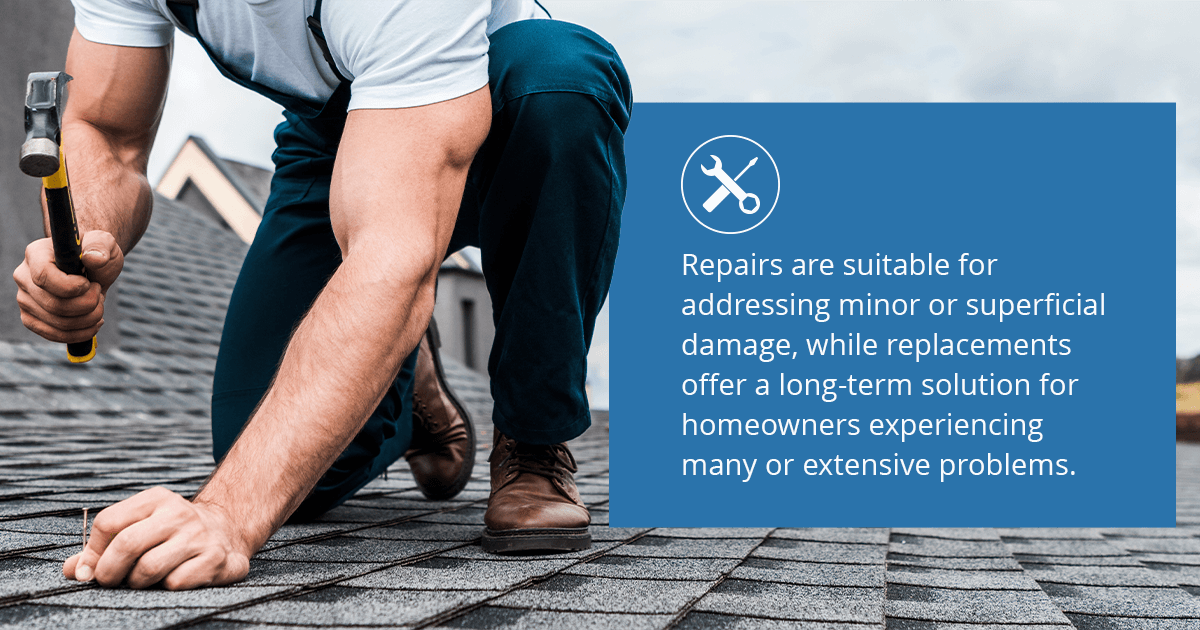
8. Evaluating the Severity: Determining Repairs and Replacements
Once you’ve identified roof damage, you must evaluate the damage severity to determine whether you need repairs or a roof replacement. Repairs are suitable for addressing minor or superficial damage, while replacements offer a long-term solution for homeowners experiencing many or extensive problems.
Repairs will be more budget-friendly in terms of upfront costs, but attempting to keep a roof nearing its end can be less cost-effective. While roofs are durable and made to last, they eventually succumb to wear and tear. Depending on your roofing materials, you may need to replace your roof anywhere from every 20 to 60 years, with some materials offering a lifetime of support. In Ohio, a new roof often costs between $5,700 and $17,500, depending on the materials, underlayment, size and existing roof condition.
If you’re not sure whether you would most benefit from repairs or a replacement, consult a professional for guidance.
9. Navigating Insurance: Considering Claims and Hiring an Inspector
Regardless of the specific services you need, it’s helpful to hire an inspector to help navigate the insurance process. Cincinnati hail damage insurance can help you save on costs associated with repairs and replacements. Many insurance policies will cover damage from wear and tear or covered losses such as hail, snow, fire or rain. Your policy will outline covered losses and provide additional information regarding aid and coverage.
Hiring a reputable roofing construction company can aid the insurance process by ensuring your provider has the proper documentation to process your claim. They can also provide accurate estimates, identify necessary repairs, and suggest roofing materials to ensure you find a lasting and cost-effective solution.
10. Preventive Measures: Maintaining Your Roof to Minimize Hail Damage
Whether you need small repairs or Cincinnati roof replacement from hail damage, it’s critical to implement strategies for minimizing or preventing future damage. Proper maintenance and regular services can prolong your roof’s life span and ensure your utmost protection. Using hail-resistant materials, requesting professional services and acting promptly after hail storms will help minimize damage. It is also helpful to know some temporary emergency roof repairs in case a disaster strikes. Some tips include:
- Securing shingles with roofing nails.
- Patching leaks as soon as possible.
- Sealing gaps with sealant or caulk.
- Cleaning your gutters and removing debris.
- Covering extensive damage with temporary tarps.
Work With Roofing Specialists You Can Trust
High-quality repairs and replacements are the best way to protect your home and family. For Cincinnati, Ohio, hail damage roof repairs, rely on the experienced professionals at Coldstream Exteriors. With more than 25 years of experience and over 10,000 projects under our belts, we understand what your Cincinnati roof needs to thrive. We deliver top-quality roofing services at an affordable cost so you can feel confident in your choice of roofing company.
Schedule an inspection to get started. We look forward to adding you to our long list of satisfied customers.
